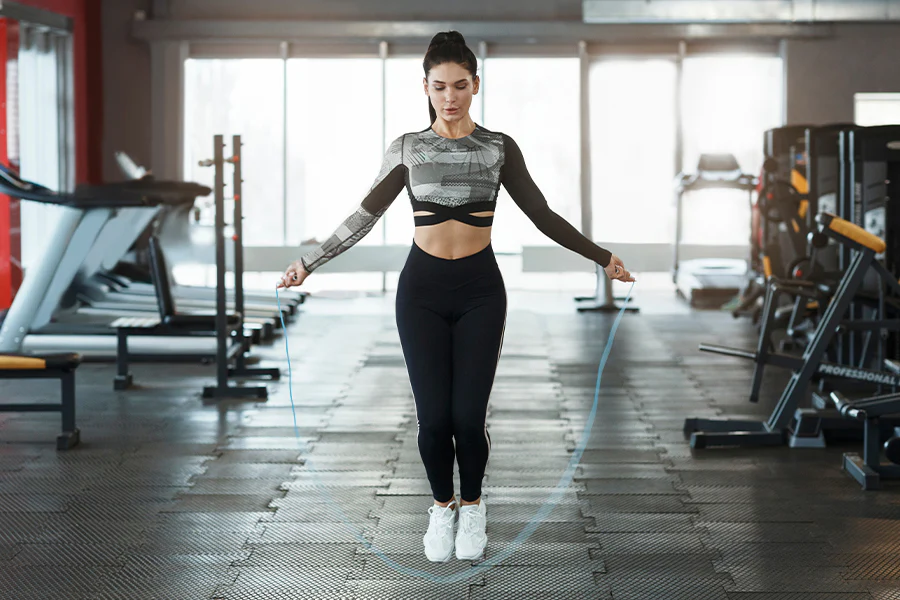Think about this one day you wake up feeling refreshed and ready to go further in your fitness journey. You wear your workout clothes, tie your shoes, and enter the cool morning air. Even though the rest of the world is still sleeping, you're already on a job.
The key to improving your health and raising your fitness is revealed to you today: the secret to a truly effective cardio workout. Cardiovascular workouts stimulate the heart and circulatory system.
They are essential for optimal health and fitness because they are specifically made to target your cardiovascular system, including your heart and blood vessels.
When you do cardio exercises regularly, you start a journey that makes your body stronger and lifts your mood. Why do cardio workouts matter so much?
Well, let's learn why this exercise plan is important. By adding cardio to your fitness routine, you're improving your general health. It's like giving your heart a warm hug and saying, "I care about you and want you to be strong."
Definition & Importance of Cardio Workouts
Your general fitness and health can be significantly improved by engaging in regular cardio exercises. Heart rate and blood circulation are both increased by cardio workouts, also known as cardiovascular workouts.
They are made to work on your heart and blood vessels, part of your cardiovascular system. Let us discuss why cardio workout is so popular. They are so much more than just getting hot.
Cardio workouts strengthen your heart muscle, so they can pump blood and increase oxygen to your body. You can do physical tasks for longer without exhaustion, thanks to improved lung function and increased endurance levels.
Additionally, by releasing endorphins, cardio exercises can help you control your weight, lower your risk of chronic diseases, and boost your happiness.
Benefits of Cardio
If you want to keep your body in tip-top shape, there's no getting around it - consistent physical activity is the name of the game. Integrating cardiovascular exercises into your workout regimen can yield many advantages beyond mere calorie incineration.
Amidst the range of workout options, cardio enhances physical health and overall wellness. Set off on a journey to discover the myriad benefits that cardio workouts bring to the table and why incorporating them into your fitness routine is a wise decision.
Related Article: 14 Weeks Full Body HIIT Calorie Destroyer Workout & Meal Plan
Enhances Weight Loss
Cardio workouts are known for burning calories, contributing to enhanced weight loss. When you do physical activities like running or riding, your body uses stored fat as energy. This helps you lose weight and keep your body in good shape.
Improved Heart Health
Cardio exercises improve your heart muscle, which is good for cardiovascular health. Cardio workouts performed regularly can lower blood pressure, lower the chance of heart disease, and enhance general heart function.
Increased Energy Levels
Despite what might sound strange, cardio workouts can increase your energy levels. Cardio workouts naturally give you more energy because they improve your blood flow and oxygen supply. This makes you feel refreshed and ready to face the day.
Stress Relief
In our busy lives, stress can harm our health. Fortunately, cardio workouts are an excellent way to deal with stress. Endorphins, or "feel-good" hormones, are produced during physical activity. These endorphins can boost your mood, make you feel less anxious, and help you feel calm and relaxed.
Better Sleep
Everyone wants a good night's sleep. Regular cardio workouts can change how you sleep, making it easier to fall asleep and giving you better sleep. Just don't work out too close to bedtime because it might make it hard for you to wind down.
Importance of Cardiovascular Health
Heart and blood vessel health is an integral part of general health. Your body works best when your heart and blood systems are healthy. Regular cardio workouts can prevent cardiovascular diseases like heart attacks and strokes. They can also lower cholesterol levels, reduce inflammation, and improve circulation.
Adding cardio exercises to your workout program is a long-term investment in your health. By caring for your cardiovascular system, you're ensuring that your body will always be able to work at its best.
Types of Cardio Workouts

Cardio workouts are a must to get fitter and stay healthy. They help you burn calories and lose those extra pounds, improving your cardiovascular health. Raising your heart rate is an effective way to burn calories during exercise. Here are a few different ways to work out that you can try out.
Low-Impact Cardio Exercises
Low-Impact cardiovascular exercises are physical activities that improve cardiovascular health without putting too much stress on your joints and bones.
These exercises are great for people who have joint problems, are healing from an injury, or want a softer workout. Even though they are low-impact, they help improve cardiovascular fitness, burn calories, and improve general health.
Walking & Brisk Walking
Walking is a simple and effective way to get your heart rate up. It strengthens your leg muscles, improves joint movement, and burns calories. Almost anyone can do this low-impact exercise. You can stroll in the park or walk quickly around your neighborhood.
Cycling (Indoor and Outdoor)
Ride a bike to get fit and feel the wind in your hair. Cycling on a stationary bike or beautiful trails is a great way to get a great cardio workout with low impact. It strengthens your legs and works your core muscles, giving you a full-body workout.
Swimming and Water Aerobics
Dive into the pool and feel weightless as you do a gentle, low-impact cardio exercise that is easy on your joints. If you like to work out in a group, water aerobics classes are a fun way to get your heart rate up and meet new people. You can try swimming, as it works out your whole body by improving your breathing and making you more flexible.
High-Impact Cardio Exercises
Exercises that put a lot of stress on your joints and muscles are referred to as high-impact cardio activities. These exercises usually involve doing the same thing repeatedly while carrying weight, which takes a lot of energy and effort. High-impact cardiovascular exercises increase your heart rate and give you a more intense workout.
Running and Jogging
Running and jogging are high-impact cardio exercises that boost your happiness, improve your cardiovascular system, and burn calories. Putting on your running shoes and hitting the streets makes you feel free. Start at your own pace and build up your speed and distance over time to give yourself a task.
Jumping Rope
Remember how much fun it was to jump rope when you were a kid? Well, it turns out that kids are not the only ones who can jump rope. This high-impact cardio exercise is a great way to burn calories and improve your agility and balance. Also, it's easy to take and can be done anywhere.
Related Article: 6 Best Jump Rope Exercises to Burn Fat Fast, Experts Say
HIIT (High-Intensity Interval Training)
HIIT is the way for people who want to take their cardio workouts to the next level. This strenuous exercise consists of short bursts of high energy followed by short times of rest. You can change HIIT workouts to fit your fitness level.
They can include exercises like burpees, mountain climbers, and squat jumps. What's the best? You can get the most out of it in a short time. Enhance your jumping exercises, including burpees, with the assistance of the DMoose Weighted Jump Rope.
Specifically designed for improved performance, this heavy jump rope is suitable for individuals of all exercise levels to enhance strength and endurance.
The added weight of the rope offers an excellent opportunity to engage your upper body and stimulate muscle growth. The handles of the weighted jump rope by DMoose are designed to provide a secure grip, even when your hands become sweaty.
Furthermore, the robust construction of the rope ensures its durability, enabling it to withstand the most intense workout sessions.
Cardio Machines at the Gym
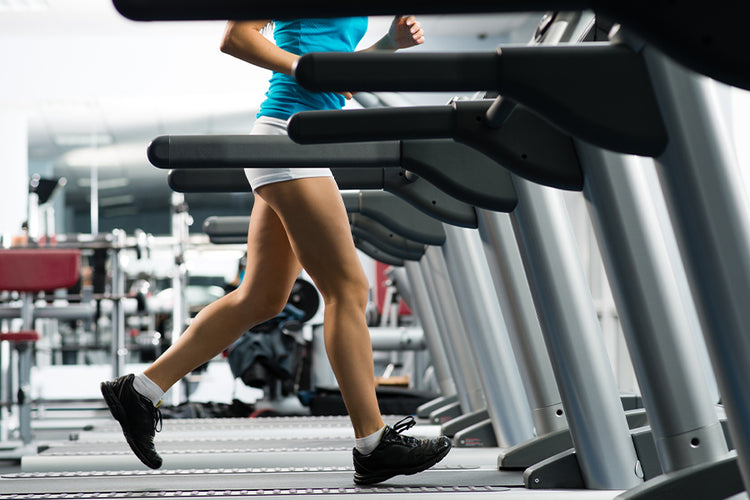
The machines at the gym that help you get your heart pumping are called cardio machines. They're made specifically for cardio exercises. They make it seem like you're running, walking, biking, rowing, and other activities.
Some common exercise equipment are treadmills, elliptical machines, stationary bikes, rowing machines, and stair steppers. These machines let you control the workout by adjusting the speed, resistance, and incline.
They help make your heart beat faster, increase your stamina, and give you a way to measure how much you've improved. Cardio machines at the gym are great for doing cardio exercises and keeping track of your fitness goals.
Treadmill
Get on the treadmill and work towards better heart health. This machine lets you walk, jog, or run at different speeds and inclines, just like outside. Treadmills have programs and tracking features that help you keep track of your progress and push yourself to do better.
Running or walking on a treadmill also gives you a controlled and even surface, which lowers your risk of getting hurt compared to running or walking outside on the rough ground. The soft surface of the treadmill helps absorb shock and lessen the effect on your joints, making it a better choice for people with joint problems or who are healing from accidents.
Elliptical Trainer
An elliptical trainer is an exercise machine simulating running or walking without putting too much pressure on your joints. The elliptical machine is a great way to get your heart rate up and work out your whole body without putting too much stress on your joints.
The elliptical trainer moves like walking, jogging, or running, but the motion is smooth and natural. It usually has two-foot pedals and two handlebars so that you can work both your upper and lower body during the workout.
Rowing Machine
If you want to relax and feel good at the same time, try a rowing machine. As rowing machines can give you a workout for your whole body, you can work on many muscles simultaneously. It's just like you would be rowing a boat.
Another exciting thing is that this workout is easy on your joints. However tough on your heart and lungs. So, why not keep your heart, lungs, core, and back stronger? Plus, you can also burn some calories.
Designing an Effective Cardio Workout Routine
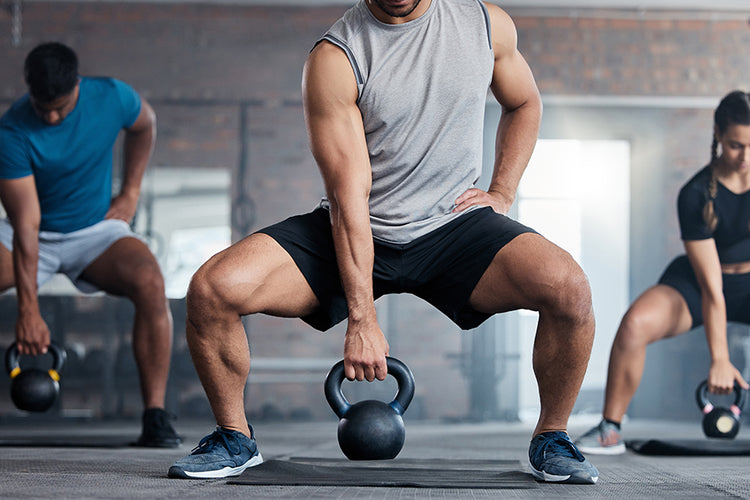
Doing cardio exercises is crucial if you want to get fit and healthy. It can help you lose weight, improve your heart health, and make you more fit overall. Let's see how you can create the best cardio workout for yourself.
Setting Fitness Goals
It's essential to have clear fitness goals before starting any workout routine. These goals will guide you and keep you motivated during your journey. Here are some typical things people aim for when doing cardio exercises:
Weight Loss
If you want to lose weight, doing cardio exercises can help you. Running, biking, or swimming can help you burn calories and lose weight by creating a calorie deficit. Many supplements can help you with weight loss.
The miraculous Fat Burner capsules by DMoose have been meticulously crafted to aid you in your quest to shed those stubborn pounds. These weight loss pills are deliberately and mainly intended to assist you in shedding off those unwanted pounds. They speed your metabolism to keep your weight under control and suppress appetite while maintaining energy levels.
Improving Cardiovascular Endurance
Cardiovascular endurance means how well your body can give oxygen and nutrients to your muscles while doing physical activity. If you want to improve your stamina, exercise to make your heart beat faster for a long time. Going for a fast walk, running, or using machines that get your heart pumping at the gym are really good options.
Increasing Overall Fitness Level
You might not feel like losing weight or participating in any particular sports event. So, you want to get fitter overall. So, you can change up your cardio workout by doing different activities that work different parts of your body and make it more challenging.
You can try different exercises like running, swimming, cycling, and high-intensity interval training (HIIT). It's better to use some stretchable rope for muscle training. You can use Battle Ropes for Muscle Training.
Determining Frequency, Duration & Intensity
Now that you know what you want to achieve with your fitness, it's time to figure out how often you will do cardio, how long each time will be, and how hard you will push yourself.
Recommended Guidelines for Cardio Workouts
The American Heart Association suggests that adults do at least 150 minutes of moderate or 75 minutes of intense exercise every week to keep their heart healthy. You can exercise for 30 minutes daily, five days a week, or have shorter but more intense workout sessions.
Customizing Your Workout Based on Personal Goals
You can customize your cardio workouts to fit your goals. Let's say you want to lose weight. If that's the case, you should do your sessions more often and for a longer time. Alternatively, you can do longer workouts at a moderate pace to increase your stamina. Don't hesitate to try different things and determine what suits you best!
Warm-Up and Cool-Down Exercises
Before starting your cardio workout, preparing your body properly is essential. Doing warm-up exercises before any physical activity is crucial because it helps get your blood flowing, loosen up your muscles, and lower the chances of getting hurt. Cool-down exercises help your heart rate return to normal and prevent muscle soreness slowly.
Importance of Preparing Your Body for Exercise
Your body will be more prepared for the workout that is to follow if you perform a thorough warm-up routine that includes activities that raise your heart rate and stretch your muscles. It's almost like giving your body a reassuring nudge that it's time to get up and walk about. Your overall performance can be considerably improved by using dynamic stretches, mild cardio, or mobility exercises as part of your warm-up routine.
Stretching and Mobility Exercises
Stretching is an essential part of any cardio workout routine that you follow. It improves flexibility, increases muscle elasticity, and lowers the risk of injury. You may improve your range of motion and flexibility by including the following stretches and exercises in both your warm-up and cool-down routines:
Dynamic Stretches
Dynamic stretches mean moving your body parts in a sweeping motion. These stretches are great for preparing muscles and improving blood circulation before exercise.
Some good stretches to warm your body before exercise are arm circles, leg swings, walking lunges, and high knees.
Static Stretches
Static stretches are when you hold a stretch for a longer time to help your muscles become more flexible and longer. Doing them after your workout is best when your muscles are warmed up and more flexible. Some basic stretches you can do without moving your body too much are stretching your hamstrings, quads, calves, and shoulders.
Mobility Exercises
Mobility exercises help you move your joints better and increase how far you can move them. They help improve your move and lower the chances of getting hurt during cardio exercises. Do simple exercises like moving your hips in circles, rotating your shoulders, twisting your spine, and rolling your ankles to make your joints more flexible.
Remember to warm up and cool down before and after your cardio workout. It's just as important as the main workout itself. They get your body ready for exercise and help it recover after.
Cardiovascular Training Techniques
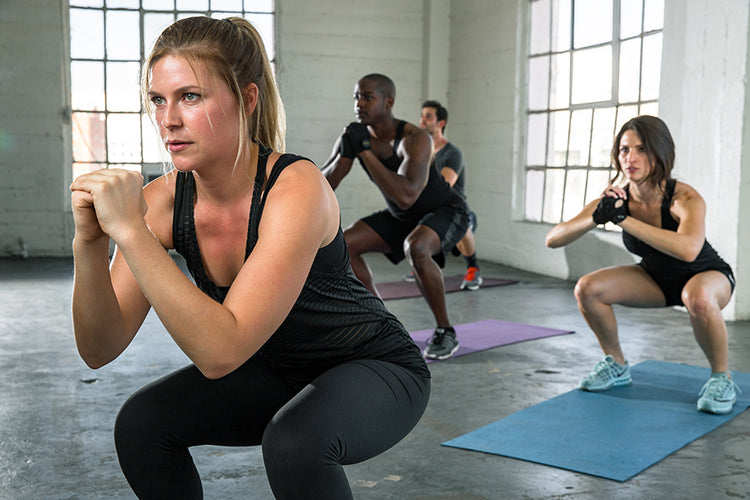
Now that you've got a good grasp on some of the most popular cardio workouts, let's explore the exciting world of training techniques that can help you take your cardiovascular fitness to the next level.
Steady-State Cardio
Steady-state cardio involves maintaining a consistent intensity throughout your workout. During steady-state cardio, your heart rate elevated to a moderate level and remained relatively stable. It's an excellent way to build endurance and improve cardiovascular health.
Definition & Benefits
Steady-state cardio refers to activities like jogging, cycling, or swimming constantly for an extended period. This technique enhances your aerobic capacity, strengthens your heart, and improves lung function. Additionally, it helps burn calories, aids in weight management, and reduces the risk of chronic diseases such as heart disease and diabetes.
Examples of Steady-State Cardio Workouts
- Brisk walking: Stroll in your neighborhood or a nearby park, ensuring you maintain a brisk pace.
- Jogging: Lace up your running shoes and hit the pavement for a leisurely jog. Focus on maintaining a steady rhythm.
- Cycling: Hop on your bike and enjoy a scenic ride, keeping a consistent speed.
- Swimming: Dive into the pool and swim laps, ensuring you maintain a continuous pace.
High-Intensity Interval Training (HIIT)
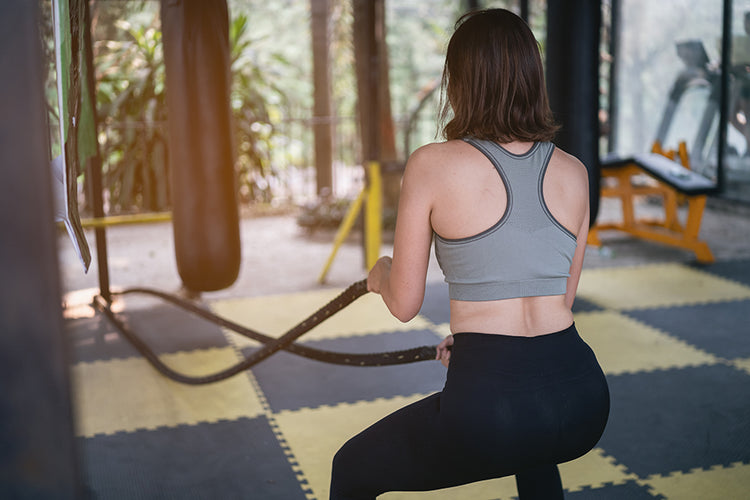
HIIT is a popular cardio training technique that alternates between intense bursts of exercise and short recovery periods. It's a highly efficient way to improve cardiovascular fitness and burn calories in a shorter amount of time.
Explanation and Benefits
HIIT workouts push your body to its limits by engaging aerobic and anaerobic energy systems. This technique boosts metabolism, increases endurance, and improves your body's ability to utilize oxygen.
The intense bursts of exercise spike your heart rate, while the recovery periods allow you to catch your breath. Additionally, HIIT workouts continue to burn calories even after you've finished exercising, thanks to the "afterburn effect."
Sample HIIT Workouts
- Tabata Workout: Perform eight rounds of 20 seconds of high-intensity exercise (e.g., burpees, jumping jacks) followed by 10 seconds of rest.
- Sprint Intervals: Find a flat stretch of road or use a treadmill. Alternate between 30 seconds of all-out sprints and 60 seconds of recovery walking or jogging.
- Circuit-style HIIT: Design a circuit with exercises (e.g., squats, push-ups, mountain climbers). Perform each exercise for 30 seconds with minimal rest between exercises. Repeat the circuit multiple times.
Circuit Training
A well-rounded workout is provided by Circuit Training, which includes Cardiovascular and Strength Training. It includes doing a number of exercises that work for different muscle groups, one after the other, with little rest in between. You can use Hex Dumbbells for your strength exercise.
Combining Cardio and Strength Exercises
Circuit training gives you the best of both worlds because it includes cardiovascular exercises to get your heart rate up and strength exercises to build lean muscle mass. This method improves your general fitness, builds muscle endurance, and helps you lose fat.
Designing an Effective Circuit Training Workout
- Choose 5-10 exercises like squats, lunges, push-ups, planks, and jumping jacks that work for different muscle groups.
- Find out how often or how long you should do each exercise, such as 10-15 times or 30 seconds.
- In your workout room, set up stations or places for each exercise.
- Do one exercise for the number of times or amount of time that was given, then go straight to the next exercise without stopping.
- Go through all of the exercises once to finish one full circle.
- After you finish a cycle, rest for 1-2 minutes and do it as many times as you want.
Tips for a Safe and Effective Cardio Workout
- Be mindful of your physical sensations while doing cardio exercises. If you feel excessively tired or encountering discomfort, consider dialing down the intensity or granting yourself a brief respite. Pushing your limits is crucial, but never compromise your health and happiness.
- Make sure to dress for success during your workout by donning the appropriate gear and shoes. This will enhance your performance and provide the necessary comfort to power through your routine.
- Don't let your feet suffer the consequences of high-impact activities! Make sure to slip into supportive athletic shoes that offer cushioning and stability. This way, you can focus on crushing your workout without worrying about potential injuries.
- Keeping yourself hydrated is crucial when it comes to cardio workouts. Quench your thirst and stay hydrated by sipping on refreshing water before, during, and after your workout to replenish the fluids lost through sweat.
- Spice up your cardio regimen and push yourself to new heights by incorporating diversity. This will keep you from getting bored and help you keep making strides. Explore a variety of activities to keep your fitness routine fresh and exciting.
- Set off on a journey of self-discovery by monitoring your fitness regimen and commemorating your accomplishments. Record your workout sessions, documenting the distances covered, the time taken, or the calories incinerated.
FAQs
1. How many times a week should I do cardio workouts?
Your number of cardio workouts relies on your health and fitness goals. For general fitness and health benefits, aim for at least 150 minutes of moderate-intensity cardio or 75 minutes of vigorous-intensity cardio per week, spread out over several sessions.
2. What time of day is best for doing cardio exercises?
The best time to do cardio exercises is when you have the most energy, which works best with your plan. Some people start their day with cardio in the morning, while others do it in the afternoon or evening. Listen to your body and pick a time that works best for you.
3. How long should a cardiovascular workout last?
The length of your cardio workout relies on your fitness level and how hard the exercises are. Aim for at least 30 minutes of cardio activity that you can do without stopping. If you're just starting, you can break it into shorter sessions throughout the day and work up to longer ones.
4. For cardio workouts, do I need any special gear?
The tools you need for cardio workouts depend on the exercise you choose. A good pair of running shoes is necessary for running or walking. Cycling needs a bike that can be fixed or used outside. A pool is needed for swimming. But many cardio exercises, like jumping rope and bodyweight exercises, don't need much or any equipment.
Conclusion
Adding effective cardio workouts to your fitness routine is a powerful way to improve your general fitness and health. Each fitness exercise benefits your body and cardiovascular system, like walking, jogging, cycling, swimming, rowing, elliptical training, or climbing stairs.
Doing fitness workouts daily can improve your cardiovascular health, build up your endurance, control your weight, and improve your general health. Cardio workouts strengthen your heart and lungs, help you burn calories, keep a healthy weight, and lower your risk of chronic diseases.
Remember to start at an easy pace and gradually raise the intensity and length of your workouts to push yourself and keep progressing. Change up your exercise workouts to keep things interesting and stop yourself from getting bored.
Make cardio workouts a regular part of your fitness routine, and try to get at least 150 minutes of moderate-intensity cardio exercise each week. Listen to what your body tells you, enjoy the process, and be proud of what you've accomplished along the way.









